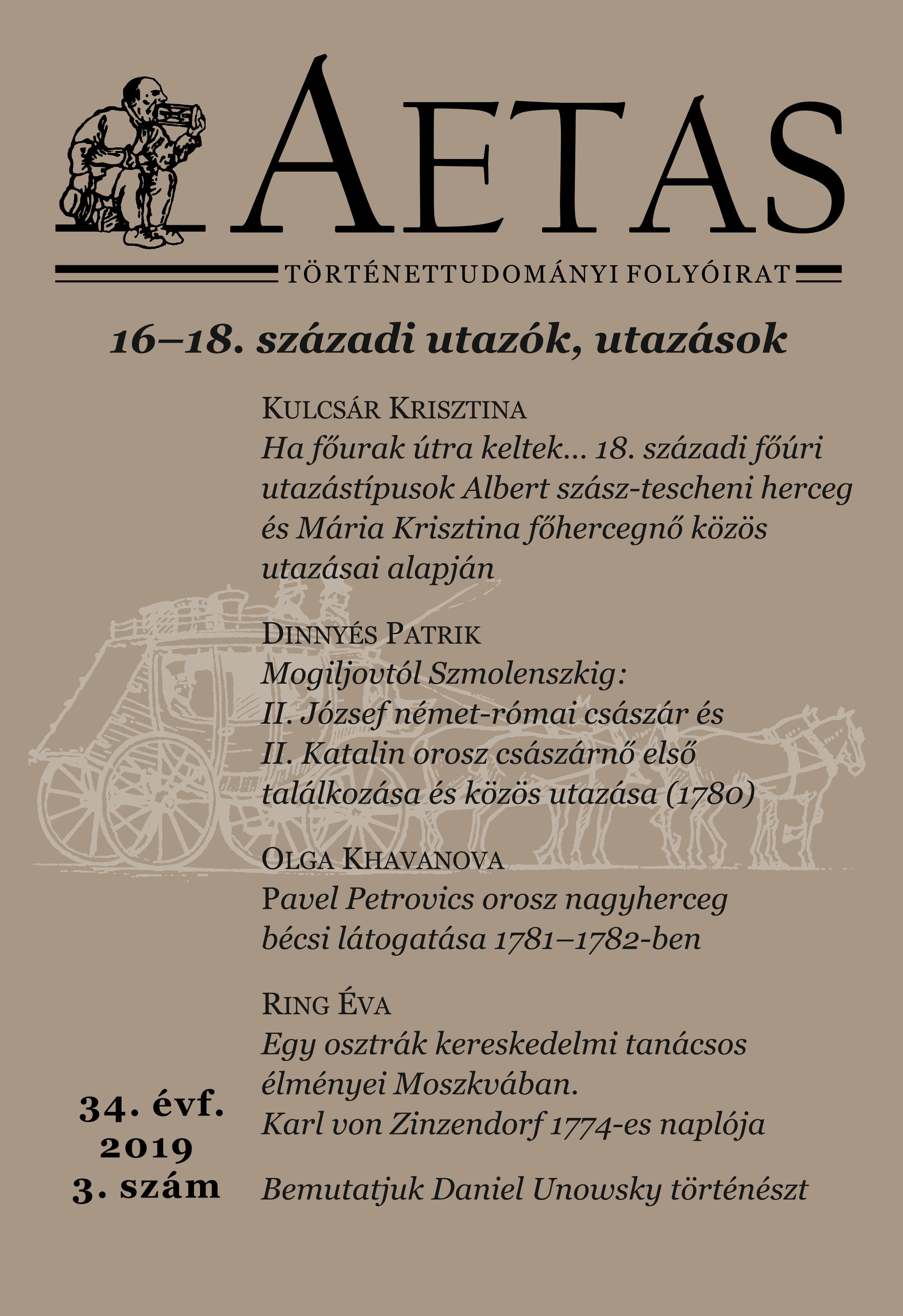Ha főurak útra keltek… 18. századi főúri utazástípusok Albert szász-tescheni herceg és Mária Krisztina főhercegnő közös utazásai alapján
When aristocrats travel. Types of aristocratic trips in the 18th century through the travels of Duke Albert of Saxony and Archduchess Maria Christina
Author(s): Krisztina KulcsárSubject(s): 18th Century
Published by: AETAS Könyv- és Lapkiadó Egyesület
Summary/Abstract: The 18th century was a golden age of travel. The number of people undertaking journeys increased significantly. This gave rise to new types of travel. This study presents old and new types of aristocratic travel with the help of three examples. These three were the journeys of Prince Albert of Saxony-Teschen and his wife, Archduchess Marie Christine. The destinations and dates in question are: Kingdom of Hungary (1766), Italy (1775–1776) and Paris/France (1786). These are compared to other types of travel. All three journeys are atypical in the sense that an aristocratic couple traveled rather than a single person, or a male aristocrat with his female companion. During these journeys the high status of Marie Christine as daughter of Empress Maria Theresa, was significant. The couple’s first shared trip was a representative court visit. It was Prince Albert’s first journey to the Kingdom of Hungary as royal governor. His official role notwithstanding the Hungarian nobility accorded higher status in the proceedings to the Archduchess. Their journeys to Italy and France, however, were not official visits. Besides calling on family members, their goals were learning and self-improvement. These travels were informal. The couple consciously avoided lavish receptions and formal social events. In accordance with the new fashion of ‘improvement’ tours (Reformstudienreise), they familiarized themselves with economic and social institutions, visited churches, galleries and art collections. They avoided any official ceremonial responsibilities during their stay in Paris, traveling ‘in incognito’ as the lord and lady of Béllye. They did this probably in order to avoid possible conflicts of interest. Their incognito enabled them to have a private, unofficial meeting with the Archduchess’s sister, Marie Antoinette. The novelty of these journeys lies in the fact that they are unique examples of the travels of a married couple in the 18th century.
Journal: AETAS - Történettudományi folyóirat
- Issue Year: 2019
- Issue No: 3
- Page Range: 20-36
- Page Count: 17
- Language: Hungarian

